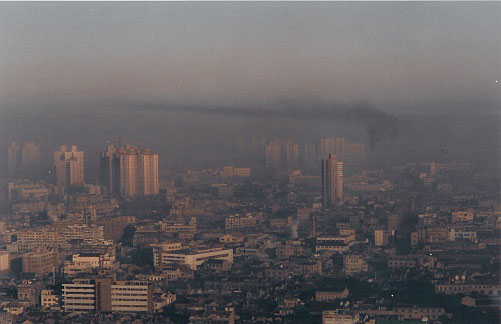
Air pollution is a major global issue. In the city of London, for example, more than 9000 deaths each year are attributed to air pollution, with around 3500 of those associated with long-term exposure to PM2.5. Now a study has shown that globally PM2.5 concentrations have increased by more than one-third since 1960, and that the number of deaths attributable to long-term exposure to PM2.5 has increased by nearly 90%.
Pollution particles are inhaled deep into the lungs, with smaller particles (PM2.5) penetrating the furthest and having the most serious effect. Those exposed to higher levels of particulate pollution are more likely to suffer from respiratory and cardiovascular diseases, and have a shorter average life expectancy.
Today, nearly 90% of the global population lives in areas exceeding the World Health Organisation’s air-quality guidelines for annual mean PM2.5. A number of studies have investigated the impact of present-day air pollution on health, but few have looked at how air pollution has affected health over the last few decades; a period where air quality changed rapidly.
To rectify this, Edward Butt from the University of Leeds, UK, and his colleagues used the HadGEM3-UKCA coupled chemistry-climate model, along with demographic and disease data, to estimate the changes in global and regional air pollution PM2.5 and the attributable health burden over the period 1960 to 2009.
The team found that global mean population-weighted PM2.5 concentrations increased by 38%, dominated by increases in China and India. The global attributable deaths from particulate pollution, meanwhile, rose by 89% to 124% over the same period, again dominated by large increases in China and India. These large increases were not only a result of regional growth in particulate air pollution levels, but were heavily influenced by rapid population growth and ageing.
“These changes resulted in significant increases in attributable deaths in China and India year-on-year because more people were being exposed to high levels of air pollution, which is further exacerbated by an ageing population, who are more vulnerable to the effects of particulate air pollution,” said Butt.
In contrast, the study showed that air-quality regulation and emission controls in Europe and the US reduced air pollution PM2.5 concentrations over the same time period. There was a significant drop in the number of attributable deaths – by 65.7% for Europe and 47.9% in the US. In 1960 the US and Europe accounted for 27% of the global attributable deaths; this fell to around 1% by 2009.
Butt and his colleagues hope that understanding the changes in particulate air pollution deaths over the past few decades can help policy makers make sound decisions on future air quality policy. They also note that projected demographic changes in Asia will pose a challenge for policy makers aiming to reduce the total number of deaths due to particulate air pollution in the near future.
The team reported the findings in Environmental Research Letters (ERL).



